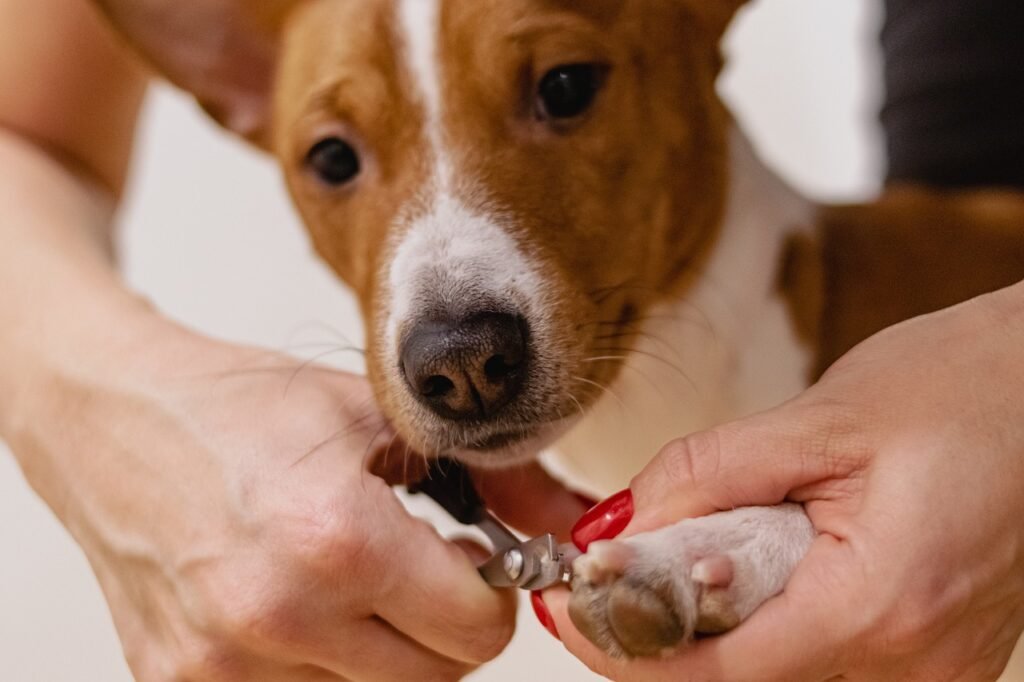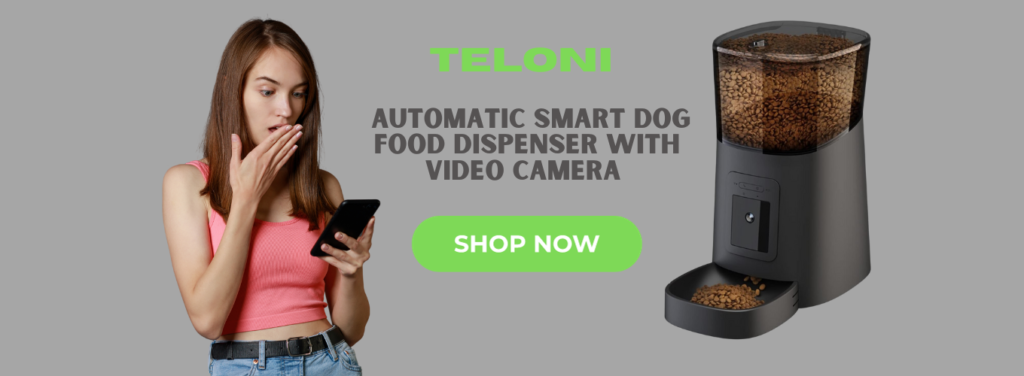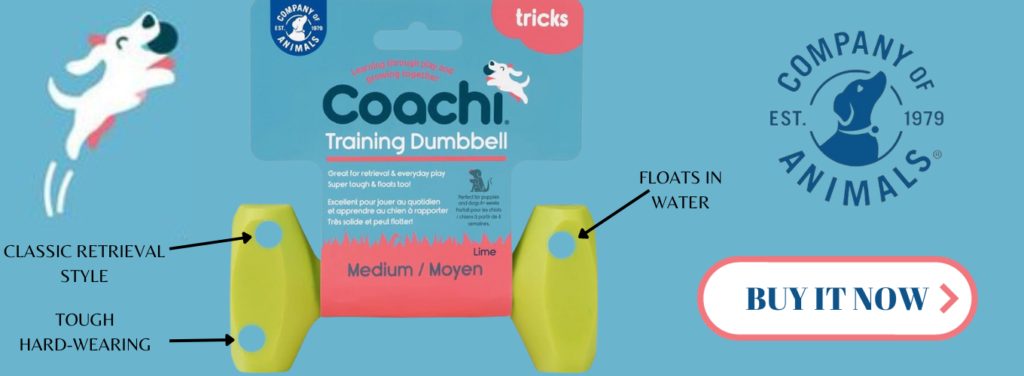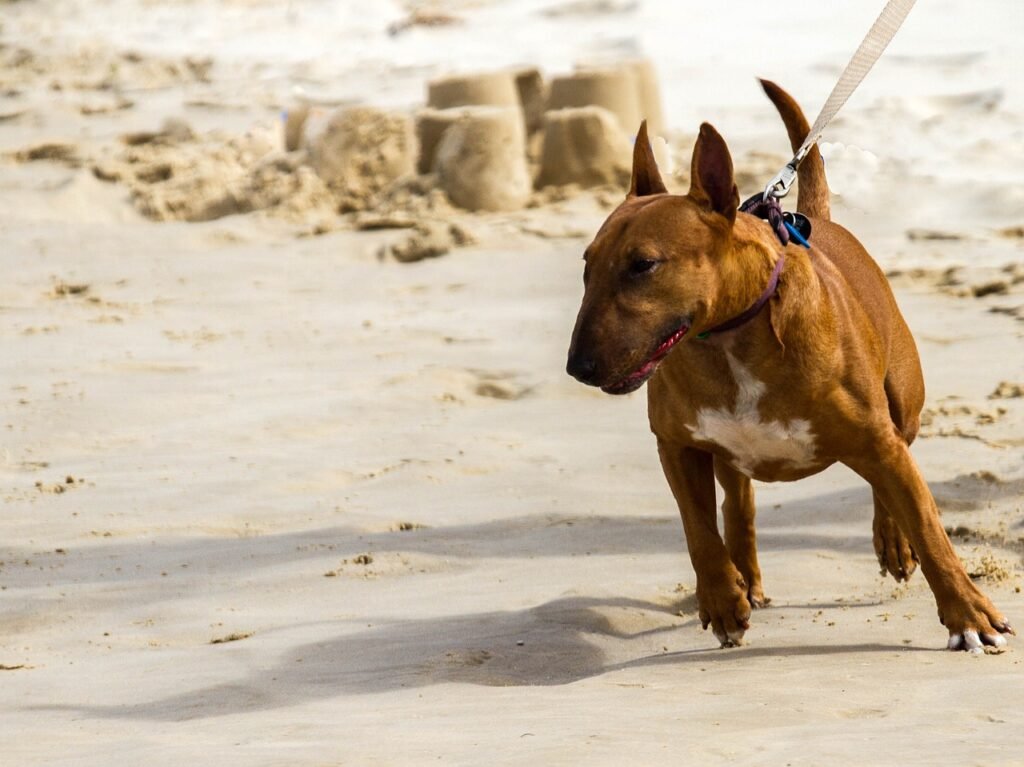
Nail clipping can be a stressful experience for both dogs and their owners. However, with the right tools and techniques, it is possible to make the grooming process easier and more enjoyable for everyone involved. In this article, we will provide a step-by-step guide to stress-free nail clipping for your dog, including tips on choosing the right tools, preparing your dog for the process, and the actual nail clipping process. By following these guidelines, you can ensure that your dog’s nails are kept at a healthy length without causing unnecessary stress or discomfort.
Key Takeaways
- Understanding your dog’s nail type is important for selecting the appropriate clippers.
- Creating a calm environment and getting your dog comfortable with handling can help reduce stress during nail clipping.
- Desensitizing your dog to clippers through gradual exposure can make the process easier.
- Proper restraint techniques are essential for safety during nail clipping.
- Identifying the quick and trimming the nails safely are crucial to avoid injury.
Choosing the Right Tools
Understanding Your Dog’s Nail Type
When it comes to nail care, it’s important to understand your dog’s nail type. Different breeds and sizes of dogs have different nail types, which can affect how you approach trimming. For example, dogs with hard nails may require stronger clippers, while dogs with soft nails may need more delicate clippers. Additionally, some dogs have clear nails, making it easier to see the quick, while others have dark nails, requiring extra caution. It’s crucial to know your dog’s nail type to ensure a safe and effective nail clipping experience.
| Nail Type | Characteristics |
|---|---|
| Hard Nails | – Difficult to trim |
- May require stronger clippers | | Soft Nails | – More delicate
- Require gentle clipping | | Clear Nails | – Easy to see the quick
- Less risk of cutting too short | | Dark Nails | – Extra caution required
- Harder to see the quick |
Selecting the Appropriate Clippers

When it comes to selecting the right clippers for your dog’s nail care, there are a few factors to consider. First, determine the size of your dog and choose clippers that are appropriate for their nail size. Next, decide between guillotine clippers or scissor clippers based on your dog’s comfort and your own preference. Additionally, you may want to invest in a nail grinder for a smoother finish. Remember, always choose clippers that are specifically designed for dogs to ensure safe and effective nail trimming.
| Clipper Type | Description |
|---|---|
| Guillotine Clippers | These clippers have a hole where you insert the nail and a blade that slides across to cut the nail. They are suitable for small to medium-sized dogs. |
| Scissor Clippers | These clippers work like scissors, with two blades that come together to cut the nail. They are more suitable for larger dogs. |
It’s important to use the right clippers to avoid discomfort or injury to your dog. Taking the time to select the appropriate clippers will make the nail clipping process easier and more successful.
Additional Tools for Nail Care
In addition to clippers, there are several additional tools that can help with your dog’s nail care. One useful tool is a nail grinder, which can be used to smooth out rough edges after trimming. Another helpful tool is a styptic powder, which can be applied to the nail in case of accidental bleeding. Additionally, you may find it beneficial to have a nail file on hand to further shape and smooth the nails. These tools can make the nail care process easier and more comfortable for both you and your dog.
| Tool | Description |
|---|---|
| Nail Grinder | Electric tool for smoothing rough edges |
| Styptic Powder | Helps stop bleeding in case of accidents |
| Nail File | Used for shaping and smoothing nails |
Remember to always consult your veterinarian for guidance on the appropriate use of these tools.
Using the right tools and techniques can make nail clipping a stress-free experience for your dog.
Preparing Your Dog for Nail Clipping
Creating a Calm Environment
Creating a calm environment is crucial for a stress-free nail clipping session. Dimming the lights and playing soothing music can help relax your dog. Using aromatherapy with calming scents like lavender or chamomile can also have a calming effect. Additionally, placing a non-slip mat on the grooming table or floor can provide stability and reduce anxiety. Remember to stay calm and speak softly to reassure your dog during the process.
| Tips for Creating a Calm Environment |
|---|
| – Dim the lights |
| – Play soothing music |
| – Use aromatherapy with calming scents |
| – Place a non-slip mat |
| – Stay calm and speak softly |
Creating a calm environment is the first step towards a successful nail clipping session. By implementing these strategies, you can help your dog feel more relaxed and comfortable, making the grooming experience a positive one.
Getting Your Dog Comfortable with Handling
Once your dog is comfortable with being touched and handled, you can start introducing the clippers. Gently hold your dog’s paw and touch the clippers to their nails without actually cutting. This will help them get used to the sensation and sound of the clippers. Reward your dog with treats and praise for allowing you to handle their paws. Gradually increase the duration of handling and introduce the clipping motion. Remember to take breaks and offer rewards throughout the process to keep your dog relaxed and cooperative.
| Tip: | Use treats or a favorite toy as a distraction during the clipping process. |
It’s important to be patient and go at your dog’s pace. Rushing the process can cause stress and make nail clipping more difficult in the future.
Step-by-Step Nail Clipping Process
Proper Restraint Techniques
Proper restraint techniques are crucial for ensuring the safety and comfort of both you and your dog during the nail clipping process. Gently hold your dog’s paw and use a restraint technique that allows you to have control while keeping your dog calm. One effective method is to wrap your arm around your dog’s body to hold them securely. Another option is to use a nail clipping harness that provides additional support and control. Remember to always be patient and gentle when restraining your dog, as any sudden movements or rough handling can cause stress and discomfort. Take your time and ensure that your dog feels secure before proceeding with the nail clipping.
Identifying the Quick
After restraining your dog properly, it’s important to identify the quick before trimming the nails. The quick is the pink area inside the nail that contains blood vessels and nerves. Cutting into the quick can cause pain and bleeding, so it’s crucial to avoid it. If your dog has clear or light-colored nails, you can easily see the quick. However, if your dog has dark-colored nails, it may be more challenging. In this case, you can use a nail grinder or a flashlight to help you visualize the quick. Take your time and be cautious when trimming your dog’s nails to ensure their safety and comfort.
| Quick Tips |
|---|
| – Be patient and gentle when handling your dog’s paws. |
| – If you accidentally cut the quick and it starts bleeding, apply styptic powder or cornstarch to stop the bleeding. |
Remember, regular nail maintenance is essential for your dog’s overall health and well-being.
Trimming the Nails Safely
After identifying the quick and ensuring you have the proper restraint techniques in place, you can begin trimming your dog’s nails safely. Take your time and be gentle to avoid causing any discomfort or injury to your dog. It’s important to use sharp and clean clippers to make the process easier and more efficient. Remember to trim only a small amount of the nail at a time to prevent cutting into the quick. If you’re unsure or uncomfortable with trimming your dog’s nails, consider seeking professional help to ensure a stress-free experience.
Here are some additional tips to keep in mind:
- Take breaks during the process to allow your dog to relax.
- Offer rewards such as treats or praise to keep your dog motivated and cooperative.
- Use positive reinforcement techniques, such as clicker training, to associate nail clipping with positive experiences.
Remember, patience and a calm approach are key to successfully trimming your dog’s nails.
Tips for Stress-Free Nail Clipping
Taking Breaks and Offering Rewards
Taking breaks during the nail clipping process is important to give your dog a chance to relax and reduce stress. You can offer rewards such as treats or praise to make the experience more positive. Rewarding your dog after each successful nail trim can help them associate the process with something enjoyable. Remember to be patient and understanding if your dog becomes anxious or uncomfortable. Listen to their cues and give them breaks as needed. Never force your dog to continue if they are showing signs of distress.
Here are some additional tips for stress-free nail clipping:
- Use positive reinforcement techniques throughout the process.
- Seek professional help if you are unsure or uncomfortable with trimming your dog’s nails.
“Taking breaks and offering rewards can make the nail clipping experience more enjoyable for your dog.”
Seeking Professional Help if Needed

If you find it difficult to trim your dog’s nails or if your dog becomes extremely stressed during the process, it may be best to seek professional help. A veterinarian or a professional dog groomer will have the experience and expertise to safely trim your dog’s nails. They can also provide guidance on how to make the nail clipping process less stressful for your dog. Remember, it’s important to prioritize your dog’s comfort and well-being. Don’t hesitate to ask for professional assistance if needed.
| Professional Help Options |
|---|
| Veterinarian |
| Professional Dog Groomer |
Seeking professional help ensures that your dog’s nails are trimmed safely and reduces the risk of injury or stress-related complications.
Frequently Asked Questions
How often should I clip my dog’s nails?
The frequency of nail clipping depends on your dog’s activity level and the rate of nail growth. In general, most dogs need their nails trimmed every 4-6 weeks.
What happens if I don’t clip my dog’s nails?
If you don’t regularly clip your dog’s nails, they can become overgrown and may curl into the paw pads. This can be painful for your dog and may lead to infection or difficulty walking.
How do I know if I’ve cut the nails too short?
If you accidentally cut the nails too short, you may cut into the quick, which is the sensitive part of the nail that contains blood vessels. This can cause bleeding and pain for your dog. If you see bleeding, apply styptic powder to stop the bleeding and consult your veterinarian if necessary.
Can I use human nail clippers on my dog?
It is not recommended to use human nail clippers on dogs. Dog nail clippers are specifically designed to accommodate the shape and thickness of dog nails. Using human nail clippers may result in uneven cuts or injury to your dog.
How can I make nail clipping less stressful for my dog?
To make nail clipping less stressful, start by getting your dog comfortable with handling and touch their paws regularly. Use positive reinforcement and rewards during the process, and take breaks if needed. Gradually desensitize your dog to the clippers by introducing them slowly and associating them with positive experiences.
What should I do if my dog is afraid of nail clippers?
If your dog is afraid of nail clippers, it is important to be patient and take things slow. Start by getting them comfortable with handling and gradually introduce the clippers. Use positive reinforcement and rewards to create a positive association. If your dog’s fear persists, consider seeking professional help from a dog trainer or veterinarian.
Nail Clipping Made Easy: Step-by-Step Guide to Stress-Free Grooming for Your Dog
Nail clipping can be a stressful experience for both dogs and their owners. However, with the right tools and techniques, it is possible to make the grooming process easier and more enjoyable for everyone involved. In this article, we will provide a step-by-step guide to stress-free nail clipping for your dog, including tips on choosing the right tools, preparing your dog for the process, and the actual nail clipping process. By following these guidelines, you can ensure that your dog’s nails are kept at a healthy length without causing unnecessary stress or discomfort.
Key Takeaways
- Understanding your dog’s nail type is important for selecting the appropriate clippers.
- Creating a calm environment and getting your dog comfortable with handling can help reduce stress during nail clipping.
- Desensitizing your dog to clippers through gradual exposure can make the process easier.
- Proper restraint techniques are essential for safety during nail clipping.
- Identifying the quick and trimming the nails safely are crucial to avoid injury.
Choosing the Right Tools
Understanding Your Dog’s Nail Type
When it comes to nail care, it’s important to understand your dog’s nail type. Different breeds and sizes of dogs have different nail types, which can affect how you approach trimming. For example, dogs with hard nails may require stronger clippers, while dogs with soft nails may need more delicate clippers. Additionally, some dogs have clear nails, making it easier to see the quick, while others have dark nails, requiring extra caution. It’s crucial to know your dog’s nail type to ensure a safe and effective nail clipping experience.
| Nail Type | Characteristics |
|---|---|
| Hard Nails | – Difficult to trim |
- May require stronger clippers | | Soft Nails | – More delicate
- Require gentle clipping | | Clear Nails | – Easy to see the quick
- Less risk of cutting too short | | Dark Nails | – Extra caution required
- Harder to see the quick |
Selecting the Appropriate Clippers

When it comes to selecting the right clippers for your dog’s nail care, there are a few factors to consider. First, determine the size of your dog and choose clippers that are appropriate for their nail size. Next, decide between guillotine clippers or scissor clippers based on your dog’s comfort and your own preference. Additionally, you may want to invest in a nail grinder for a smoother finish. Remember, always choose clippers that are specifically designed for dogs to ensure safe and effective nail trimming.
| Clipper Type | Description |
|---|---|
| Guillotine Clippers | These clippers have a hole where you insert the nail and a blade that slides across to cut the nail. They are suitable for small to medium-sized dogs. |
| Scissor Clippers | These clippers work like scissors, with two blades that come together to cut the nail. They are more suitable for larger dogs. |
It’s important to use the right clippers to avoid discomfort or injury to your dog. Taking the time to select the appropriate clippers will make the nail clipping process easier and more successful.
Additional Tools for Nail Care
In addition to clippers, there are several additional tools that can help with your dog’s nail care. One useful tool is a nail grinder, which can be used to smooth out rough edges after trimming. Another helpful tool is a styptic powder, which can be applied to the nail in case of accidental bleeding. Additionally, you may find it beneficial to have a nail file on hand to further shape and smooth the nails. These tools can make the nail care process easier and more comfortable for both you and your dog.
| Tool | Description |
|---|---|
| Nail Grinder | Electric tool for smoothing rough edges |
| Styptic Powder | Helps stop bleeding in case of accidents |
| Nail File | Used for shaping and smoothing nails |
Remember to always consult your veterinarian for guidance on the appropriate use of these tools.
Using the right tools and techniques can make nail clipping a stress-free experience for your dog.
Preparing Your Dog for Nail Clipping
Creating a Calm Environment
Creating a calm environment is crucial for a stress-free nail clipping session. Dimming the lights and playing soothing music can help relax your dog. Using aromatherapy with calming scents like lavender or chamomile can also have a calming effect. Additionally, placing a non-slip mat on the grooming table or floor can provide stability and reduce anxiety. Remember to stay calm and speak softly to reassure your dog during the process.
| Tips for Creating a Calm Environment |
|---|
| – Dim the lights |
| – Play soothing music |
| – Use aromatherapy with calming scents |
| – Place a non-slip mat |
| – Stay calm and speak softly |
Creating a calm environment is the first step towards a successful nail clipping session. By implementing these strategies, you can help your dog feel more relaxed and comfortable, making the grooming experience a positive one.
Getting Your Dog Comfortable with Handling
Once your dog is comfortable with being touched and handled, you can start introducing the clippers. Gently hold your dog’s paw and touch the clippers to their nails without actually cutting. This will help them get used to the sensation and sound of the clippers. Reward your dog with treats and praise for allowing you to handle their paws. Gradually increase the duration of handling and introduce the clipping motion. Remember to take breaks and offer rewards throughout the process to keep your dog relaxed and cooperative.

| Tip: | Use treats or a favorite toy as a distraction during the clipping process. |
It’s important to be patient and go at your dog’s pace. Rushing the process can cause stress and make nail clipping more difficult in the future.
Step-by-Step Nail Clipping Process
Proper Restraint Techniques
Proper restraint techniques are crucial for ensuring the safety and comfort of both you and your dog during the nail clipping process. Gently hold your dog’s paw and use a restraint technique that allows you to have control while keeping your dog calm. One effective method is to wrap your arm around your dog’s body to hold them securely. Another option is to use a nail clipping harness that provides additional support and control. Remember to always be patient and gentle when restraining your dog, as any sudden movements or rough handling can cause stress and discomfort. Take your time and ensure that your dog feels secure before proceeding with the nail clipping.
Identifying the Quick
After restraining your dog properly, it’s important to identify the quick before trimming the nails. The quick is the pink area inside the nail that contains blood vessels and nerves. Cutting into the quick can cause pain and bleeding, so it’s crucial to avoid it. If your dog has clear or light-colored nails, you can easily see the quick. However, if your dog has dark-colored nails, it may be more challenging. In this case, you can use a nail grinder or a flashlight to help you visualize the quick. Take your time and be cautious when trimming your dog’s nails to ensure their safety and comfort.
| Quick Tips |
|---|
| – Be patient and gentle when handling your dog’s paws. |
| – If you accidentally cut the quick and it starts bleeding, apply styptic powder or cornstarch to stop the bleeding. |
Remember, regular nail maintenance is essential for your dog’s overall health and well-being.
Trimming the Nails Safely
After identifying the quick and ensuring you have the proper restraint techniques in place, you can begin trimming your dog’s nails safely. Take your time and be gentle to avoid causing any discomfort or injury to your dog. It’s important to use sharp and clean clippers to make the process easier and more efficient. Remember to trim only a small amount of the nail at a time to prevent cutting into the quick. If you’re unsure or uncomfortable with trimming your dog’s nails, consider seeking professional help to ensure a stress-free experience.
Here are some additional tips to keep in mind:
- Take breaks during the process to allow your dog to relax.
- Offer rewards such as treats or praise to keep your dog motivated and cooperative.
- Use positive reinforcement techniques, such as clicker training, to associate nail clipping with positive experiences.
Remember, patience and a calm approach are key to successfully trimming your dog’s nails.
Tips for Stress-Free Nail Clipping

Taking Breaks and Offering Rewards
Taking breaks during the nail clipping process is important to give your dog a chance to relax and reduce stress. You can offer rewards such as treats or praise to make the experience more positive. Rewarding your dog after each successful nail trim can help them associate the process with something enjoyable. Remember to be patient and understanding if your dog becomes anxious or uncomfortable. Listen to their cues and give them breaks as needed. Never force your dog to continue if they are showing signs of distress.
Here are some additional tips for stress-free nail clipping:
- Use positive reinforcement techniques throughout the process.
- Seek professional help if you are unsure or uncomfortable with trimming your dog’s nails.
“Taking breaks and offering rewards can make the nail clipping experience more enjoyable for your dog.”
Seeking Professional Help if Needed
If you find it difficult to trim your dog’s nails or if your dog becomes extremely stressed during the process, it may be best to seek professional help. A veterinarian or a professional dog groomer will have the experience and expertise to safely trim your dog’s nails. They can also provide guidance on how to make the nail clipping process less stressful for your dog. Remember, it’s important to prioritize your dog’s comfort and well-being. Don’t hesitate to ask for professional assistance if needed.
| Professional Help Options |
|---|
| Veterinarian |
| Professional Dog Groomer |
Seeking professional help ensures that your dog’s nails are trimmed safely and reduces the risk of injury or stress-related complications.
Frequently Asked Questions
How often should I clip my dog’s nails?
The frequency of nail clipping depends on your dog’s activity level and the rate of nail growth. In general, most dogs need their nails trimmed every 4-6 weeks.
What happens if I don’t clip my dog’s nails?
If you don’t regularly clip your dog’s nails, they can become overgrown and may curl into the paw pads. This can be painful for your dog and may lead to infection or difficulty walking.
How do I know if I’ve cut the nails too short?
If you accidentally cut the nails too short, you may cut into the quick, which is the sensitive part of the nail that contains blood vessels. This can cause bleeding and pain for your dog. If you see bleeding, apply styptic powder to stop the bleeding and consult your veterinarian if necessary.
Can I use human nail clippers on my dog?
It is not recommended to use human nail clippers on dogs. Dog nail clippers are specifically designed to accommodate the shape and thickness of dog nails. Using human nail clippers may result in uneven cuts or injury to your dog.
How can I make nail clipping less stressful for my dog?
To make nail clipping less stressful, start by getting your dog comfortable with handling and touch their paws regularly. Use positive reinforcement and rewards during the process, and take breaks if needed. Gradually desensitize your dog to the clippers by introducing them slowly and associating them with positive experiences.
What should I do if my dog is afraid of nail clippers?
If your dog is afraid of nail clippers, it is important to be patient and take things slow. Start by getting them comfortable with handling and gradually introduce the clippers. Use positive reinforcement and rewards to create a positive association. If your dog’s fear persists, consider seeking professional help from a dog trainer or veterinarian.

